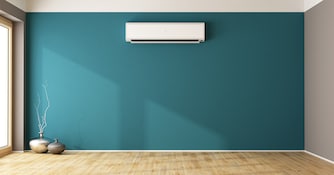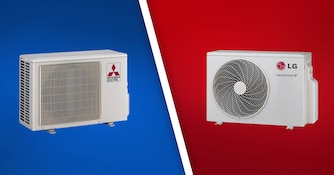
What is a Condensate Pump?
One of the requirements of owning a mini split is a way to drain condensate. As warm, humid air flows across the mini split's cooling coil, it condenses to form water droplets. This water needs to be drained.
Typically, this is done by installing a mini split drain line. In some cases when gravity is not on your side, you may need to install a condensate removal pump. We'll cover everything you need to know about mini split condensate, from what it is to how to deal with it.
What is Mini Split Condensate?
 Condensate refers to the water droplets formed through condensation. If you remember science class, condensation is the process by which hot, humid air is cooled beyond its dew point or reaches 100% relative humidity.
Condensate refers to the water droplets formed through condensation. If you remember science class, condensation is the process by which hot, humid air is cooled beyond its dew point or reaches 100% relative humidity.
Think of when you step outside on a hot day with an ice-cold drink in your hand and why your mom always insisted you use a coaster on the furniture. In both cases, water droplets would form.
This same process happens inside your mini split. Warm air passes across a cooling coil filled with refrigerant. The moisture in the warm air condenses over the cooling coil and forms water droplets, or condensate.
Is Condensate Dangerous?
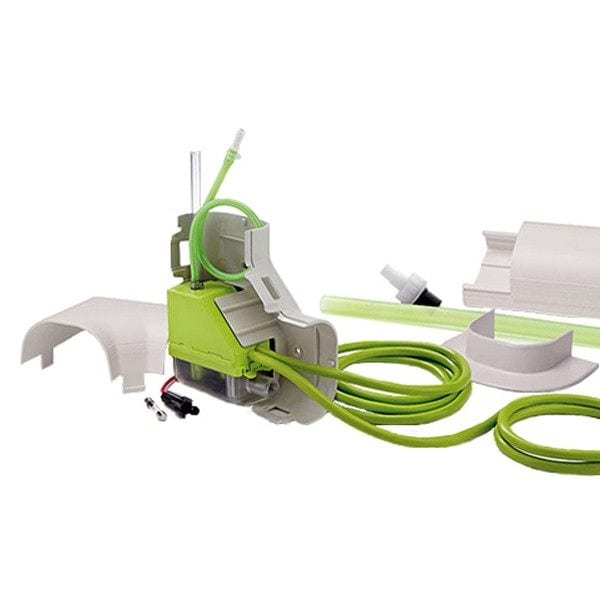 Although it's proof that humidity is being removed from the indoor air, condensation can still pose a problem. It needs somewhere to go.
Although it's proof that humidity is being removed from the indoor air, condensation can still pose a problem. It needs somewhere to go.
Without proper drainage, water droplets formed over time can begin to pool and even overflow, damaging your walls, ceilings, floors, and possessions. Left untreated, condensate will wreak havoc on your home and can cost thousands of dollars in repairs.
The solution is to properly drain the water away from your house. You can remove condensate in various ways. Some mini split units require pumps, and others simply use a piece of tubing to gravity-drain the condensate outside.
Mini Split Condensate Drain Line Installation
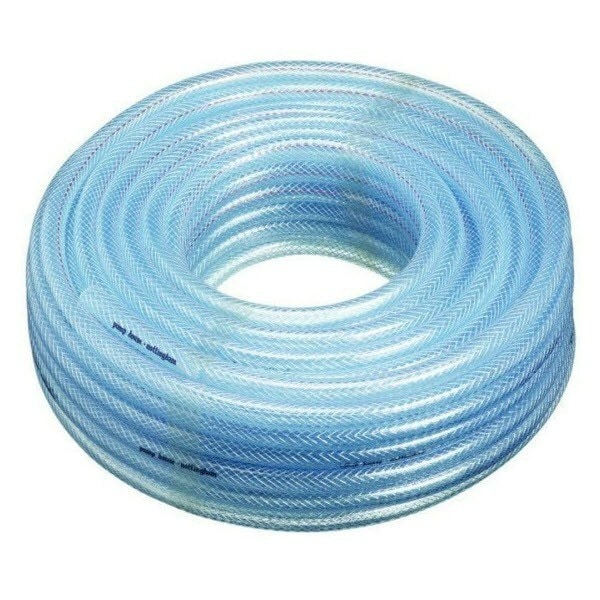 The most common way to remove condensate is by using a 5/8" inner diameter vinyl drain tube. This method is standard for nearly all wall-mounted and floor-mounted indoor units.
The most common way to remove condensate is by using a 5/8" inner diameter vinyl drain tube. This method is standard for nearly all wall-mounted and floor-mounted indoor units.
When using flexible vinyl tubing to expel condensate, be careful that the tubing does not become kinked, as this will prevent the water from escaping and could cause water to overflow out of the indoor unit. Using braided tubing as opposed to standard clear tubing greatly reduces the chance that the tubing will kink.
Wall- and floor-mounted units rarely include condensate pumps for helping remove the water, so they rely on gravity to remove the accumulated moisture. This means that the drain line must be sloped downward all the way to prevent backups.
For this reason, it's important that the hole through which your drain line runs be 1/4" to 1/2" lower outside than it is inside. This will help keep the drain line angled down for proper drainage.
In order to get the best results and keep your factory warranty intact, you're going to want a professional installation.
Mini Split Condensate Pump Installation
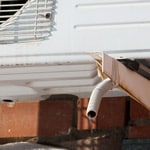 In some cases, relying on gravity to drain moisture from an indoor unit is not possible, and a condensate pump may be required. Condensate removal pumps push condensate against gravity when necessary to drain it out of your home. This is crucial when your system is below the drain line.
In some cases, relying on gravity to drain moisture from an indoor unit is not possible, and a condensate pump may be required. Condensate removal pumps push condensate against gravity when necessary to drain it out of your home. This is crucial when your system is below the drain line.
Units with built-in lift pumps, like ceiling cassettes and concealed ducted units, typically use 1" or 1-1/4" rigid PVC rather than flexible tubing. This makes it easier to maintain an appropriate slope over a longer horizontal run.
In other cases, it may be possible to drain several units using a single line. In such applications, you should refer to the manufacturer's guidelines and your installer's recommendations to ensure your piping can handle the volume of water the connected units will produce.
Units that typically need a condensate or lift pump usually come with one included. These include ceiling cassette units, concealed ducted units, and some ceiling suspended models.
Wall mounted and floor mounted units are generally intended to be mounted on an exterior wall where they can gravity-drain through the wall without the assistance of a condensate pump.
However, if you use one of these units on an interior wall or below ground level, you'll need something more than drain tubing to lift and move that condensate to a drainage point; in which case, an optional condensate pump can be used to move the condensate to a suitable drain location.
Types of Condensate Pumps
While all condensate pumps essentially do the same thing (remove condensate), there are several styles to choose from.
Regardless of form, condensate pumps all consist of the same basic components:
- A reservoir connected to the drain pan of the indoor unit collects the water produced during the cooling or drying operation.
- Once the water reaches a certain level, a built-in float switch turns on the connected condensate pump. On many models, the float switch can also act as an alarm that can turn off the indoor unit to prevent an overflow in the event of a pump failure.
Shop Condensate Pumps
Standard Condensate Pumps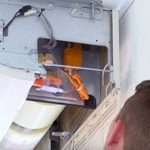 A standard condensate pump is concealed out of sight in a ceiling or wall. The reservoir is installed inside the indoor unit and connects to the unit's drain pan so it can collect the condensate. The pump itself is installed outside the unit.
A standard condensate pump is concealed out of sight in a ceiling or wall. The reservoir is installed inside the indoor unit and connects to the unit's drain pan so it can collect the condensate. The pump itself is installed outside the unit.
These types of pumps serve most applications very well as they're out of sight and generally quiet.
High Suction Condensate Pumps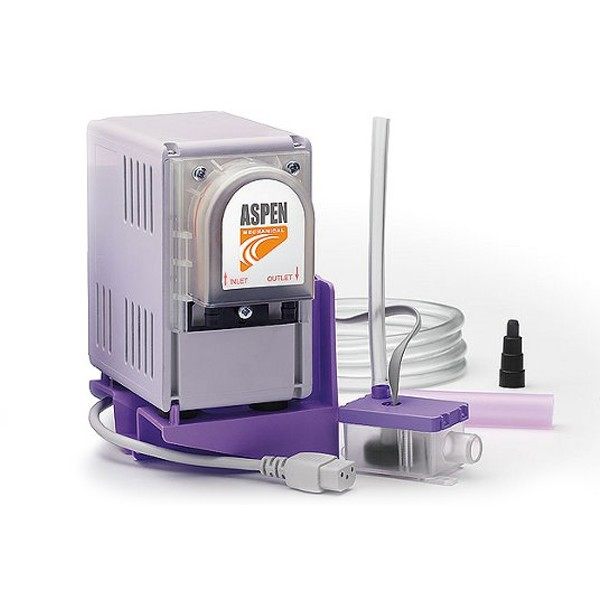 Similar to the standard condensate pump, you can get high suction condensate pumps with extra suction power, or high head as it's called. These install the same as a standard condensate pump, but are more capable of lifting condensate higher and further.
Similar to the standard condensate pump, you can get high suction condensate pumps with extra suction power, or high head as it's called. These install the same as a standard condensate pump, but are more capable of lifting condensate higher and further.
These are ideal if you're installing a unit below ground level and need to pump condensate up to a higher elevation before draining it outside.
Because the pump can be located further from the space being conditioned, these high suction pumps are excellent in applications where noise needs to be minimized.
Low Profile Condensate Pumps If you're not interested in installing the condensate pump in your ceiling or wall, there are some less intrusive options as well.
If you're not interested in installing the condensate pump in your ceiling or wall, there are some less intrusive options as well.
You can opt for a low profile condensate pump, which fits entirely inside the indoor unit itself, so it's completely out of sight.
Surface Mounted Condensate Pumps
For ease of maintenance, there's a surface mounted condensate pump that is installed directly to the bottom of the mini split unit itself.
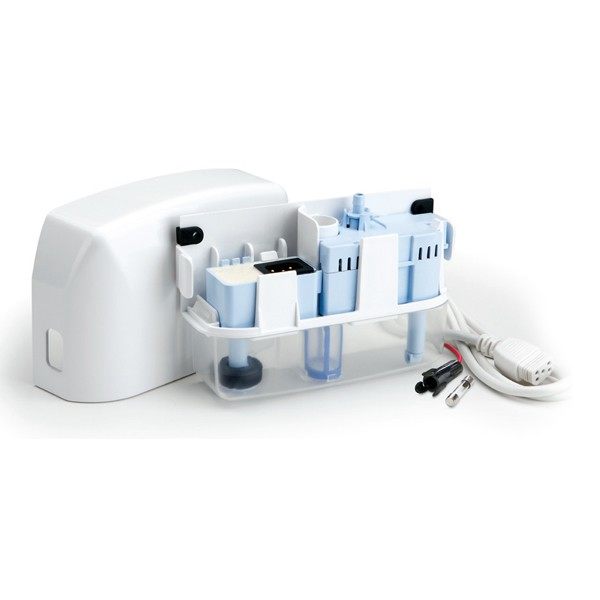 The pump and reservoir are located on the outside of the unit in a small, easily-accessible box. While this may not be the quietest option, it's much easier to access should you need to clean or repair any part of it.
The pump and reservoir are located on the outside of the unit in a small, easily-accessible box. While this may not be the quietest option, it's much easier to access should you need to clean or repair any part of it.
Drain Away
Now you know your condensate draining options and the benefits of each. Considering what preferences you have for your home can help you to decide which style(s) of condensate removal will best serve your needs.
If you still aren't sure what the best method of condensate removal is for you, or if you have any concerns about compatibility, you can always feel free to contact us.
Home | Inverter Technology | Efficiency | Dehumidification | Heat Pumps vs A/C | Winterizing | Single-Zone vs Multi-Zone | How To Zone | Indoor Units | Accessories | Find an Installer | Mini Split Sizing Calculator | System Builder


